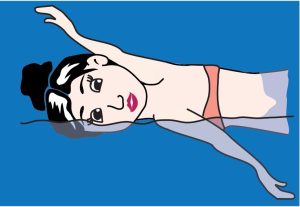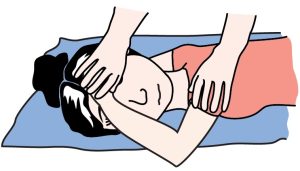Shoulder Pain?
Shoulder Impingement Syndrome
SIS (shoulder or subacromial impingement syndrome) is also sometimes called swimmer’s or thrower’s syndrome. The tendons of the rotator cuff muscles become irritated and inflamed as they pass through the subacromial space. Common symptoms are pain, weakness and reduced range of movement for the affected shoulder. The pain typically feels worse at night when lying on the shoulder or when reaching/making overhead movements.

Causes of SIS
SIS is often related to sports injury, typically in sports involving a lot of shoulder motion like swimming or throwing. But, it may also be a slow process related to muscle weakness, structure and other factors. The shoulder is quite complex, with four joints and various muscles and bones coordinating different types of movement. When you raise your arm, the subacromial space narrows. In SIS, something is causing further narrowing of this space. This impinges the tendon and results in painful inflammation.
Diagnosis and Treatment
When a patient is experiencing shoulder pain, we complete a physical examination and assessment of symptoms and history. It is pretty straightforward to diagnosis SIS from this. Ultrasound or X-ray may be used to rule out certain structural causes and injuries. Through the evaluation process, we can determine the nature of the issue and develop a treatment plan.

Treatment is most often conservative (non-surgical), primarily consisting of physiotherapy along with pain and inflammation relief and rest. The therapist will work to understand how the impingement occurred, analyze the key issues and tailor a therapy program accordingly. Physical therapy sessions will typically consist of:
- Mobilization which aims to restore the joint to correct motion, stabilize the bones and correct posture/positioning.
- Exercises strengthen the surrounding muscles and loosen any tight muscles that are impeding proper motion. Due to the complex nature of the shoulder’s mechanism, there are many components to get working properly together. In addition to the exercises done in the sessions, the physical therapist instructs the patient in at-home exercises and stretching.
- Proprioceptive Neuromuscular Facilitation (PNF) is a manual therapy technique that may provide benefits by facilitating functional movements. It enhances a patient’s strength and range of motion.

If the problem has been present long-term (more than a few months), a patient will usually need 20-30 physical therapy sessions. If the SIS is relatively new (less than three months), it can usually be resolved in 10-15 sessions. The patient usually attends physical therapy 2-3 times/week.
If you notice shoulder pain, don’t wait to seek an evaluation. You can minimize the treatment time and complexity and save yourself a lot of discomfort. The body also compensates for such issues, so additional problems may develop if left untreated. Contact Body & Soul to make an appointment for a comprehensive assessment. The multidisciplinary team offering combination of osteopathy, physiotherapy, and chiropractic and acupuncture can be an excellent resource if you are dealing with pain.
